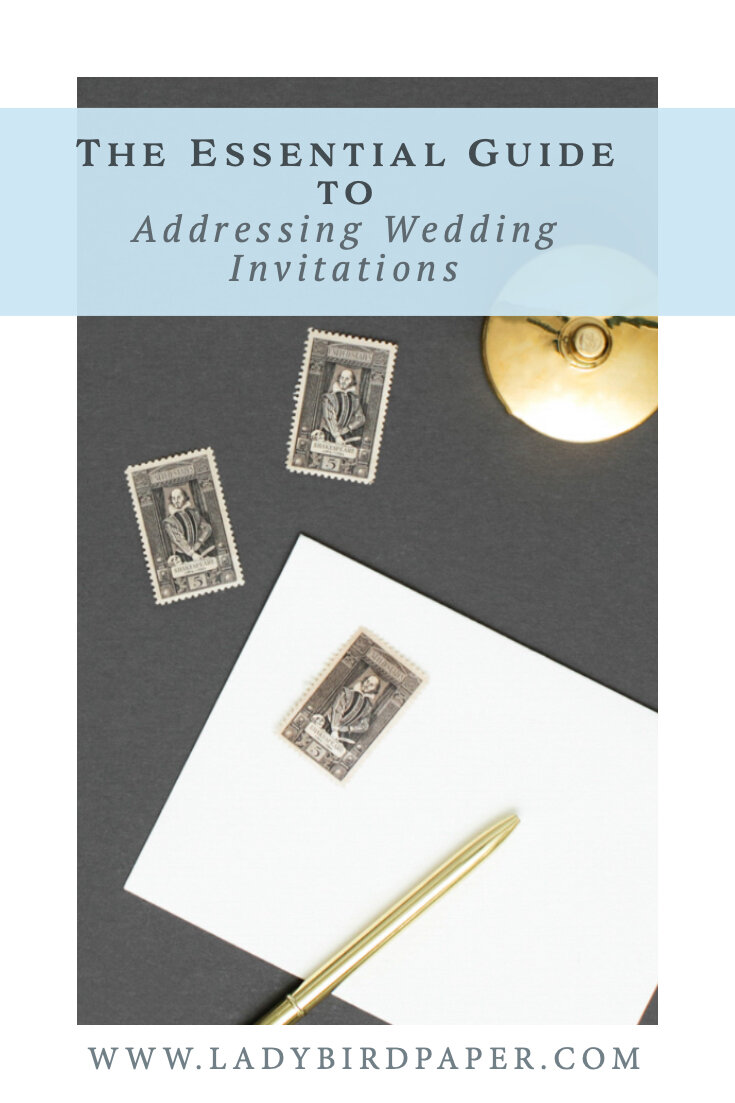The Essential Guide to Addressing Your Wedding Invitations
I’ve said it before, and I’ll say it again. Weddings are becoming less formal, and the rule book has become more of a loose guideline. That being said, I like to lay out all of the most stringent of rules for my clients, and give guidance based on the formality of their wedding.
In today’s world, a lot of couples want their weddings to be a reflection of them and that means breaking the rules sometimes. I have found that a lot of young couples do not want to send invitations to their close friends as “Mr. and Mrs.”, but just their names. However, very often the couples want to honor the fact that certain family members or friends of their parents may want to have their names written in the official format. I have great news for you! That is A-OKAY! Spoiler alert - your guests will only receive their own invitation! You can tailor each envelope per the addressee’s preference. The key to this being a success is having a clear address list. You can find the one I send my clients here. I will note that if your wedding is formal or black tie, you should stick to the most traditional of rules.
Now that you have all of that in mind, let me give you the most formal of rules, knowing that you can adjust them to your liking.
For formal invitations, abbreviations should not be used for Street, Drive, Avenue, Apartment, or for cities and States. Abbreviations can be appropriate for less formal invitations.
Courtesy titles such as Mr. and Mrs. can be abbreviated, but Doctor should be spelled out.
If you do not use Mr. and Mrs., in a less formal style, the woman’s name should always go first.
Ex. Mr. and Mrs. David Jones would become Anna and David Jones
Street numbers less than 10 should be written out in full. Anything greater than 10 should be written out numerically.
Physicians, veterinarians, and dentists use “Doctor”, and clergy use their religious titles. Professional certifications, such as CPA and Esquire, aren’t used in wedding invitations.
A comma should come before suffixes such as Jr. and Senior, but not before roman numerals II, III, and so on.
“Miss” is commonly used for ladies under the age of 18. Unmarried women over 18 are traditionally addressed as “Ms.”
Children over the age of 18, still living at home, should receive their own invitation.
Children and guest escorts should not be mentioned on the outer envelope, unless you are using single envelopes only.
These are just a few guidelines that I hope will help you in this step of your wedding planning journey.
xoxo,
Alexandra

